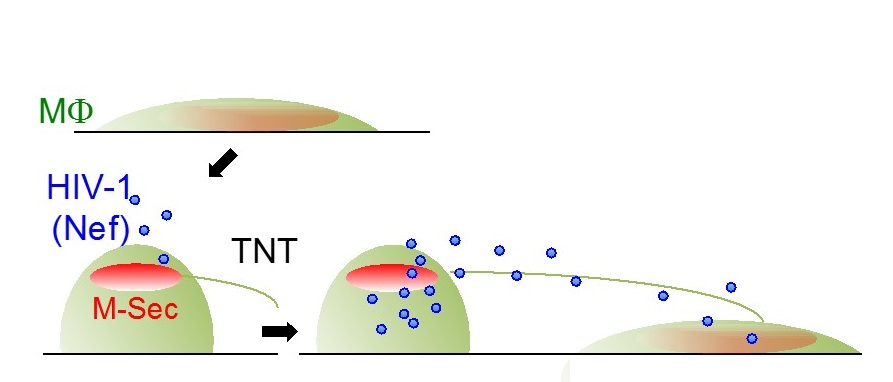- HOME
- News & Events
- Publications
- 【Publications】Tunneling nanotubes in HIV-1 spread
Publications
【Publications】Tunneling nanotubes in HIV-1 spread
March 14 2016
Paper information
Hashimoto M*, Bhuyan F*, Hiyoshi M, Noyori O, Nasser H, Miyazaki M, Saito T, Kondoh Y, Osada H, Kimura S, Hase K, Ohno H, Suzu S.
Potential role of the formation of tunneling nanotubes in HIV-1 spread in macrophages. J. Immunol. Feb 15; 196(4):1823-1841. (*Equal contribution)
Highlights
-
HIV-1 promotes tunneling nanotube (TNT) formation per se via its protein Nef and a cellular protein M-Sec.
-
TNTs mediate approximately half of viral spread among monocyte-derived macrophages.
-
TNTs might answer the long-standing question how Nef promotes HIV-1 production in a cell type-specific manner.
Abstract
Tunneling nanotubes (TNTs), the long membrane extensions connecting distant cells, have emerged as a novel form of cell-to-cell communication. However, it is not fully understood how and to what extent TNTs contribute to intercellular spread of pathogens including HIV-1. In this study, we show that HIV-1 promotes TNT formation per se via its protein Nef and a cellular protein M-Sec, which appears to mediate approximately half of viral spread among monocyte-derived macrophages (MDMs). A small compound that inhibits M-Sec-induced TNT formation reduced HIV-1 production by almost half in MDMs. Such inhibition was not observed with Nef-deficient mutant HIV-1 that fails to promote TNT formation and replicates less efficiently than the wild-type HIV-1 in MDMs. The TNT inhibitor-sensitive/Nef-promoting viral production was also observed in a T cell line ectopically expressing M-Sec, but not in another M-Sec- T cell line. Our results suggest the importance of TNTs in HIV-1 spread among MDMs and might answer the long-standing question how Nef promotes HIV-1 production in a cell type-specific manner.
